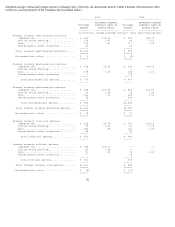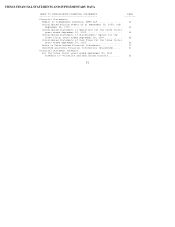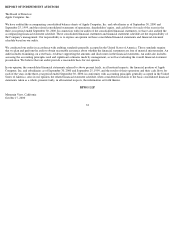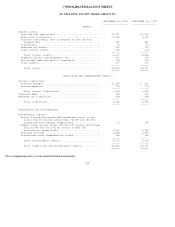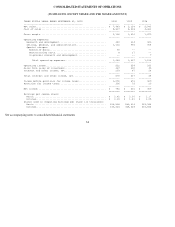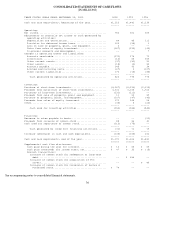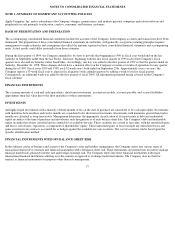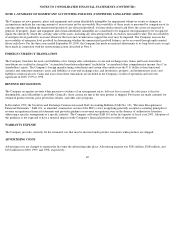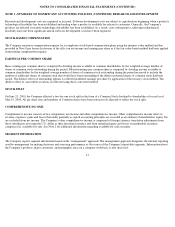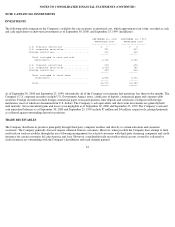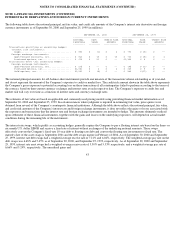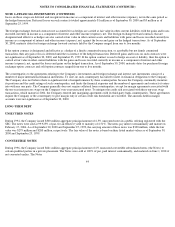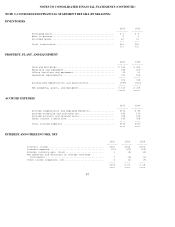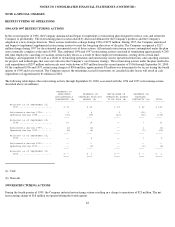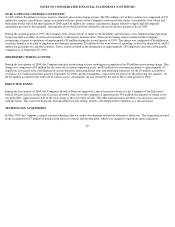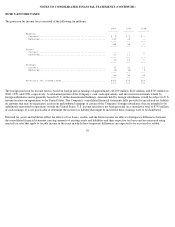Apple 2000 Annual Report Download - page 43
Download and view the complete annual report
Please find page 43 of the 2000 Apple annual report below. You can navigate through the pages in the report by either clicking on the pages listed below, or by using the keyword search tool below to find specific information within the annual report.NOTES TO CONSOLIDATED FINANCIAL STATEMENTS (CONTINUED)
NOTE 1--SUMMARY OF SIGNIFICANT ACCOUNTING POLICIES (CONTINUED) LONG-LIVED ASSETS
The Company reviews property, plant, and equipment and certain identifiable intangibles for impairment whenever events or changes in
circumstances indicate the carrying amount of an asset may not be recoverable. Recoverability of these assets is measured by comparison of its
carrying amount, including the unamortized portion of any allocated goodwill, to future undiscounted cash flows the assets are expected to
generate. If property, plant, and equipment and certain identifiable intangibles are considered to be impaired, the impairment to be recognized
equals the amount by which the carrying value of the assets, including any allocated goodwill, exceeds its fair market value. The recoverability
of enterprise level goodwill is assessed whenever the facts and circumstances suggest the asset may be impaired. The Company assesses the
recoverability of enterprise level goodwill by determining whether the unamortized goodwill balance can be recovered through undiscounted
future cash flows. For the three years ended September 30, 2000, the Company has made no material adjustments to its long-
lived assets except
those made in connection with the restructuring actions described in Note 4.
FOREIGN CURRENCY TRANSLATION
The Company translates the assets and liabilities of its foreign sales subsidiaries at year-end exchange rates. Gains and losses from these
translations are credited or charged to "accumulated translation adjustment" included in "accumulated other comprehensive income (loss)" in
shareholders' equity. The Company's foreign manufacturing subsidiaries and certain other entities use the U.S. dollar as their functional
currency and remeasure monetary assets and liabilities at year-end exchange rates, and inventories, property, and nonmonetary assets and
liabilities at historical rates. Gains and losses from these translations are included in the Company's results of operations and were not
significant in 2000, 1999 or 1998.
REVENUE RECOGNITION
The Company recognizes revenue when persuasive evidence of an arrangement exists, delivery has occurred, the sales price is fixed or
determinable, and collectibility is probable. Generally, these criteria are met at the time product is shipped. Provisions are made currently for
estimated product returns, price protection, rebates, and other sales programs.
In December 1999, the Securities and Exchange Commission issued Staff Accounting Bulletin (SAB) No. 101, "Revenue Recognition in
Financial Statements." SAB 101, as amended, summarizes certain of the SEC's views in applying generally accepted accounting principles to
revenue recognition in financial statements and provides guidance on revenue recognition issues in the absence of authoritative literature
addressing a specific arrangement or a specific industry. The Company will adopt SAB 101 in the first quarter of fiscal year 2001. Adoption of
this guidance is not expected to have a material impact on the Company's financial position or results of operations.
WARRANTY EXPENSE
The Company provides currently for the estimated cost that may be incurred under product warranties when products are shipped.
ADVERTISING COSTS
Advertising costs are charged to expense the first time the advertising takes place. Advertising expense was $281 million, $208 million, and
$152 million for 2000, 1999, and 1998, respectively.
40


